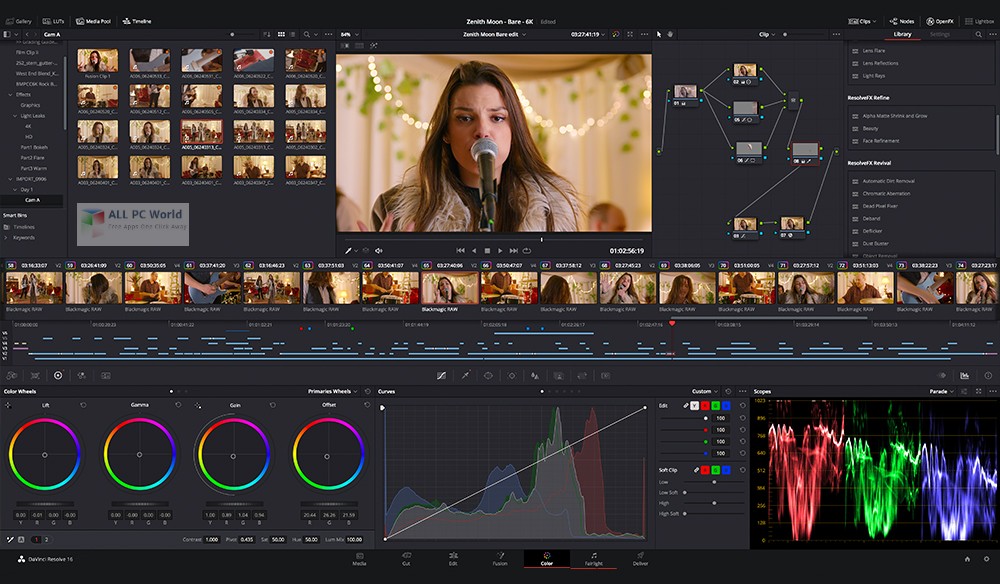

709 colour space, and it sort of is what it is,” added Wallach. “The broadcast footage wasn’t scans of raw files. The challenge with these elements was the lack of a log file for grading, which can make a more intense look harder to achieve. “The idea that I presented was when they come to the broadcast portions, we should go for this hyper saturated look, almost like you’re walking through an electronics retailer and you see all these TVs in ‘display mode,’ where it’s just really bright and vivid, and there’s something a little uncomfortable about it,” he explained. Wallach suggested an approach for grading those scenes. “There was also a lot that was shot with digital broadcast cameras in a studio type space for when characters are appearing on TV.” “It was predominantly a 35mm show but there was some anamorphic, some spherical, some Super 8 and a little bit of 16mm,” said Wallach. On Don’t Look Up, Sandgren shot with a range of formats, in addition to film, which added to the complexity of the grade.

He also likes to approach colour in ways that hold to the feel of photochemical work. Sandgren prefers to shoot film negative whenever possible, as opposed to digital acquisition, and to treat digital colour grading with an eye for always preserving the filmic look of the images. Wallach had primarily focused on dailies colour in recent years working with many top cinematographers, including Sandgren who likes Wallach’s approach to colour and asked that he do both dailies and final colour for his previous film No Time To Die. The film was graded by Matt Wallach at Company 3 using DaVinci Resolve Studio editing, grading, visual effects (VFX) and audio post production software. The film was directed by Adam McKay with cinematography by Linus Sandgren FSF ASC.
Netflix’s Don’t Look Up follows two academic astronomers who, after discovering a comet destined to destroy the Earth within six months, must go on a giant media tour to warn humankind.


 0 kommentar(er)
0 kommentar(er)
